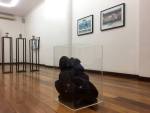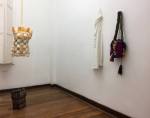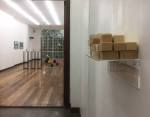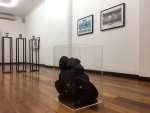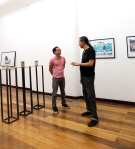(Medellin, Colombia)—It’s my first time in Colombia (and actually, South America). For a week in Bogota, I sat terrified in the back seat of taxi drivers who went through the manic city as though they had a death wish. I stuffed myself with arepas, almojabanas, and pan de queso, without the usual reaction I get from wheat bread, because—whee!—these puppies are gluten-free. I walked through the cobblestoned streets of La Candelaria, full of history and stories and tourists and kitsch, feeling as though I were back in my birthplace of Manila.

Walking the streets of La Candelaria in Bogota
Colombia and the Philippines share very similar stories. Both countries were Spanish colonies, are very diverse in terms of landscapes, flora, food, and people, and have had histories of unfortunate violence. Filipinos are often considered to be the Latinos of Asia, and in fact many Colombians and Filipinos look a bit similar. Heck, they definitely look more Filipino than I, the apparent ambassador of Chinese, Korean, and Japanese faces. Food is similarly rich in meats and rice, though these people use way more avocados than I ever have.

Colombian graffiti
I stick out like a sore thumb with a neon Band Aid here. Perhaps I look Colombian from the back, since they mostly have black hair as well, but spin me around and wham, awkwardness ensues. The only Asians I have seen so far are the two Korean tourists I saw in a Juan Valdez Cafe across the street from the Museo de Botero in Bogota, their hiking clothes a dead giveaway; and the Taiwanese woman who works in the vegetarian restaurant across the street from Casa Tres Patios, one of my two hosting residencies, in Medellin. At least they only look and don’t touch, I tell myself silently, sending mental shade to other places where I experienced more harassment.

Are those Koreans I see behind my arepa? Wassup, guys!
Colombia is gritty, its winding streets filled with stories of past violence, old but not forgotten, with its gnarled fingers clinging to the skirts of the new and young wave of modern and forward-thinking attitudes. It has surprised me so many times, from the first day in Bogota where I saw people betting on guinea pigs, to the free admission of its beautiful museums, the varying climate of Manila-esque heat in the city of Medellin to the stark cold of its surrounding mountain villages. It feels like Manila, if Manila had better urban planning and more condoms available. I am obsessed with their indigenous cultures—these ancient tribes have adapted for centuries and are still here!— and I even bought myself a pet ocarina (a type of flute) from their archeology museum. His name is Puck, and I can’t wait to do this residency with this little guy.

Buenos dias, Puck! Vamos a trabajar!
I am won over by the warmth of the people here. At Casa Tres Patios, I average seven morning hugs a day. There is almost always cafe tinto on the stove; I will never complain about the coffee here! There are more bridges that connect us than walls that separate us; Tony, the director of Casa Tres Patios, was also a Fulbright scholar and has a third degree black belt in taekwondo (I have to prevent myself from bowing—good God, my tic of bowing all the time!), and Sonia, their general coordinator, speaks better Mandarin than I do, owing to two years in China. People have been very kind, in spite of the language barrier I am determined to bridge. Both Platohedro and Casa Tres Patios have been incredibly supportive, and the vibe of both residencies have been very homey for me, a nomad with a broken suitcase. Speaking with my Spanish, rusty and with a Castillian accent, feels like riding a bike (if I rode bikes, ha). If you want to make a Latino giggle, just thank him with a Muchas grathias. And if I finally succeed in rolling my r’s instead of gargling them, I will get back to you.

Hello, Medellin!
I can’t not tell you why it was important for me to be here: because I’ve never been. It was a logical nightmare to get me all the way here from Asia, but so many people have helped bring me here, and I dare not waste a minute. Well-meaning friends have cautioned against my coming here, fearing for my safety or because of ignorance against Colombians and Latinos in general. In a world full of increasing hate and higher walls, which is even more terrifying in light of the borders we build around ourselves and the environment (hello, climate change), the only way to cure one’s anxiety against his unknown fellow human beings is to get to know them.
It’s my first time in Colombia, and man, I’m thrilled to be here. The Apocalypse Project will have an amazing time.














